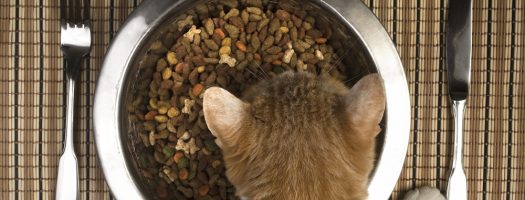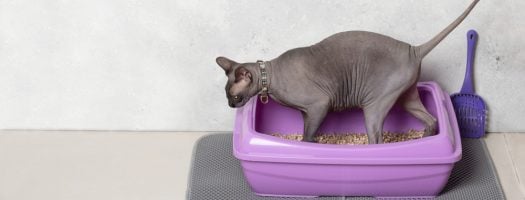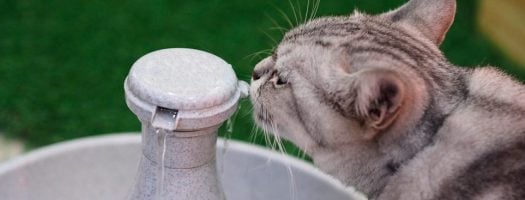The 10 Best Guinea Pig Bedding to Buy in 2025
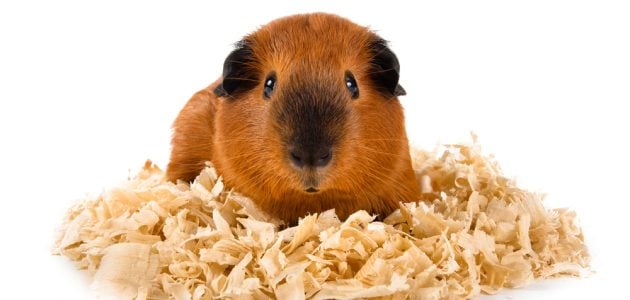
Just like us, guinea pigs love a comfy, safe place to call home. And as guinea pig owners, that’s exactly what we want to provide. But getting the right bedding for our guinea pigs isn’t always easy.
In this guide, we break down everything you need to know about guinea pig bedding so that you can choose products that will have your guinea pigs content in their new home!
- What to Look for in a Guinea Pig Bedding
- Top 10 Best Guinea Pig Bedding 2025
- 1. Best Overall Guinea Pig Bedding: GuineaDad Fleece Liner 2.0
- 2. Best Budget Guinea Pig Bedding: Pulse Brands - Super Absorbent Disposable Cage Liners
- 3. Best Premium Guinea Pig Bedding: Small Pets & Company – Guinea Pig Fleece Cage Liner
- 4. Best Wood Guinea Pig Bedding: Living World Aspen Shavings
- 5. Kaytee Clean & Cozy White Small Animal Bedding
- 6. Kaytee Clean & Cozy Extreme Odor Control
- 7. Small Pet Select Natural Paper Bedding
- 8. Kaytee All Natural Aspen Bedding
- 9. Carefresh Shavings Plus Pet Bedding
- 10. Carefresh Small Pet Bedding
- How to Choose the Right Guinea Pig Bedding
- Final Thoughts
What to Look for in a Guinea Pig Bedding
There are a number of factors you need to consider when buying bedding for your guinea pig, which can impact everything from your guinea pig’s health to your finances. In the list below, we advise on some of the key things to look out for.
Material
Choosing the right material for your guinea pig is important because it affects everything from comfort to health. We have covered all the different material options here.
But whatever material you choose, you will want to make sure that it is:
Non-Toxic
Because your guinea pig is so little, they can be affected by small amounts of toxins that wouldn’t bother a larger animal or human.
Dust-Free
Just like with humans, too much dust – such as that found in generic sawdust or cat litter – can affect your guinea pig’s breathing. Check that any product you buy for your guinea is at least 99% dust-free.
Aroma-Free
Your guinea pig has a very sensitive nose and even mild aromas, such as those found in some wood products, can be overwhelming. Imagine if you were stuck in a room with a bad smell all day – bedding with too much aroma will feel like that to your guinea pig!
Another note: you may also want to consider materials like paper, which encourage natural guinea pig behaviors like nesting and burrowing.
Absorbency & Odor
Guinea pigs pee. Guineas pigs poo – sometimes, as frequently as ten times an hour. That’s a lot of poop. And a lot of potential odor.
Luckily, the best guinea pig bedding can help you deal with some of those unfortunate poo smells and absorb all that pig pee until you have the time to clean it out again.
Certain products are more absorbent than others. Paper-based products, for instance, can prove more absorbent than wood shavings and better at controlling odors. But they do tend to be more expensive as a result.
Environment
All that bedding has to come from somewhere, and the more we use, the more impact our guinea pig can have on the environment.
Eco-conscious guinea pig owners have turned to more sustainable options, like fleece linings, in recent years to reduce their impact. Although these are more expensive to purchase, they can prove much cheaper than single-use products in the long run. They can be more time consuming, however, as they need to be washed and cleaned with a special pet detergent on a weekly basis.
Hardwood and biodegradable paper bedding can also prove a good environmental alternative to fleece based or traditional bedding options.
Budget
When budgeting for your guinea pig bedding, you will need to consider the upfront cost, the amount supplied, and how cost-effective it proves over time.
Reusable fleece liners are expensive upfront but can prove cost-effective in the long term, while wood shavings and paper products can be cheaper at first but require regular replacing. Buying larger volumes of bedding in one purchase is usually cheaper than buying several, smaller amounts over time.
Origin
Although the FDA (the US Food & Drug Administration) regulates the importation of some animal products, these are mostly concerned with animal food and veterinary drugs. Crucially, the FDA does not currently regulate bedding for small animals like guinea pigs.
That means it’s up to you, the owner, to check that the bedding you buy meets animal welfare standards. With a great deal of cheap imports coming from abroad, you may want to stick to products made within the United States from reputable brands so you can be confident of its source. In the product reviews below, we’ll let you know when this is the case.
Experience
Your experience as a guinea pig owner might also affect your choice. The Metropolitan Guinea Pig Rescue recommends that first time owners use paper bedding, Aspen, or a combination of the two – as these are the easiest to manage.
New guinea pig owners, and less-experienced pet owners like younger children, may find the care requirements of a fleece lining more difficult.
A tip: Try out small quantities of different guinea pig bedding before you commit to one product. Every guinea pig is unique and will prefer different materials for their nests.
Top 10 Best Guinea Pig Bedding 2025
1. Best Overall Guinea Pig Bedding: GuineaDad Fleece Liner 2.0
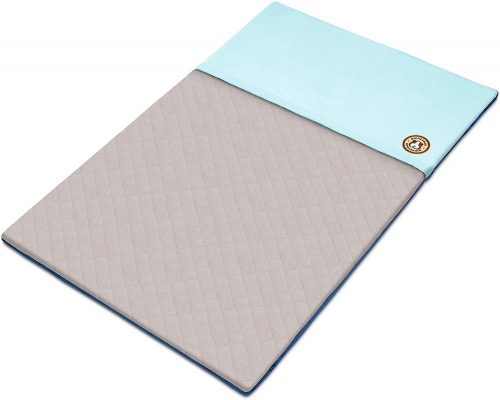
Editor’s Rating:
Why we like it: This liner’s bamboo material is naturally resistant to odors and bacterias.
Material: Fleece
Made in California by guinea-pig-specific company GuineaDad, the Fleece Liner 2.0 is a popular bedding solution. It has a bamboo fiber lining, which is naturally anti-bacterial, and uses a three-layer system to drain urine away from the surface of the fleece without it soaking through the bottom. This keeps your cavy’s feet dry and the area below the cage mess-free.
Unlike other bedding materials, the fleece liner can also be washed and re-used. So, although the upfront cost is more expensive than paper or wood-based bedding options, it can prove more cost-efficient for those on the budget.
The eco-conscious will be pleased with its bio-degradable properties, while your guineas will love the pocket sleeve, which lets them express their natural burrowing instincts.
There are some significant drawbacks, however. First-time guinea pig owners should be particularly aware that, unlike disposable bedding, the fleece lining needs lots of maintenance – requiring regular washes with a special, pet-friendly, detergent. This means you may need to alternate between two liners. The lining can also begin to shrink over time after repeated washing.
Likewise, whilst its urine-absorbency is effective, the fleece lining struggles more with guinea pig poo, which accumulates quickly and can prove more odorous than alternative materials. If this is a deal-breaker for you, then consider a paper-based product like Kaytee Clean & Cozy instead.
Our Tip:
The lining will need to be carefully matched to your cage size and weighted down or attached at the edges – otherwise you may find your guinea pigs spending more time under your lining than on it!
Pros
- Excellent urine absorbency
- Anti-bacterial and environmentally-friendly
- Cost-effective
- Encourages burrowing behavior
- Comes in multiple sizes for different cage types
Cons
- Requires regular rewashing
- May shrink over time
- Guinea Pigs can get underneath lining
2. Best Budget Guinea Pig Bedding: Pulse Brands - Super Absorbent Disposable Cage Liners
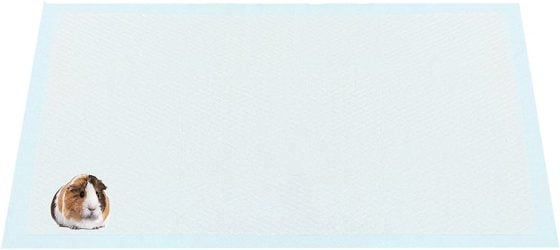
Editor’s Rating:
Why we like it: With a multilayer absorbent pad, this liner isn’t reusable but it is incredibly convenient for pet owners.
Material: Multi-Layer Liner (similar to fleece)
Though not technically a fleece lining, Pulse Brands Disposable Cage Liners perform a very similar function, using a multi-layer system to wick urine moisture away from the surface. These liners even transform liquids into gel, minimizing odor over time.
New guinea pig owners may also be attracted to a disposable product, making maintenance of your guinea pig bedding quick and easy.
However, like all disposable products, they both are worse for the environment and less cost-effective. A pack of disposable liners is much less expensive than products like the GuineaDad Fleece Liner 2.0, although you will have to replenish over time For more environmentally friendly disposables, you may prefer paper-based options such as the Small Pet Select Natural Paper Bedding.
As a plastic rather than a fleece-based product, they are also better paired with additional bedding, rather than serving as a standalone solution. Without this, your guinea pig may find the liners too uncomfortable, or be tempted to chew the material.
Consumers may find they have to cut or fold their liners depending on cage size, as each pad comes in a single, 22×22 inch size.
Pros
- Easy to maintain
- Five-layered for urine absorption
- Transforms liquids into gel, minimizing odors and moisture
- Well suited to first-time guinea pig owners
Cons
- Not reusable
- Less comfortable than fleece
- Less environmentally friendly than alternatives
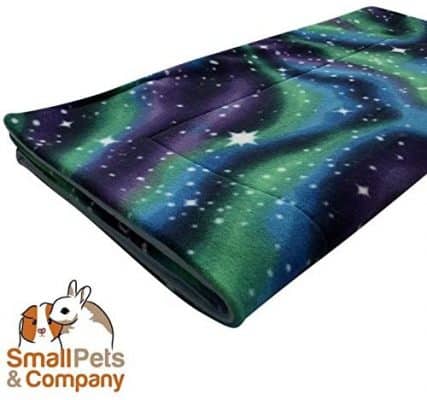
Material: Fleece
Another good product from an established US brand, Small Pets & Company provide quality fleece cage liners made right here in the US. Their liner offers all the usual benefits of a fleece-based product: comfortable, healthy bedding that can be washed and re-used, making it soft on the environment and your bank balance.
Compared to the GuineaDad Fleece Liner 2.0, it fits larger than the cage diameter in order to accommodate any shrinking and helping prevent your cavy burrowing underneath, and is fitted directly for specific brands of cages like Midwest, C&C, and Corner Pad.
This does mean that consumers with different cages may struggle to get an exact fit, though the company should produce more sizes in the near future. We don’t recommend buying larger and trimming, as this can damage the liner’s layering system.
Another drawback is the product’s absorbency, which proves less effective than its competitors in the fleece category, as well as paper-based bedding solutions. Since this is one of the more expensive fleece liner options, that may be a deal-breaker.
Our Tip:
Make sure you dry your fleece liner on low heat after washing to avoid shrinkage. Rinsing with vinegar can help with persistent odors.
Pros
- Made in the US
- Comfortable
- Brand-specific sizing
- Larger sizes prevent burrowing
- Reusable
Cons
- More expensive than competitors
- Absorbency not as effective as other options
4. Best Wood Guinea Pig Bedding: Living World Aspen Shavings
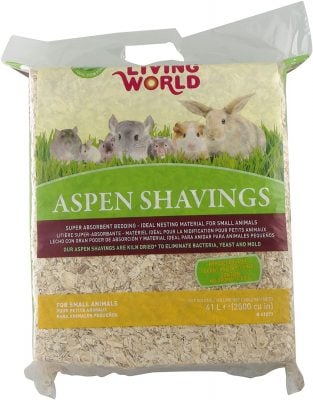
Editor’s Rating:
Why we like it: This wood bedding isn’t treated, meaning it doesn’t contain the toxins of other wood beddings.
Material: Wood
Living World’s aspen bedding is an affordable wood-based option for owners whose guinea pigs prefer rooting about in a more substantial material. The company has been around for near fifty years now, producing reliable products for small pets.
The shavings are hypoallergenic and devoid of aromatic oils, limiting the risk of respiratory problems. The bedding is heat-treated and entirely natural – so no need to worry about toxic substances upsetting your pet.
However, Aspen is a hardwood, making it less absorbent – and potentially more odorous -than paper or fleece. Guinea Pigs and owners alike may find its lack of softness an issue in the long term, and, like any bedding made of shavings, can end up just as much around the cage as inside of it! Likewise, consistency can vary between batches.
Pros
- Hypoallergenic
- Chemical and aroma free
- Good for burrowing
- Affordable
Cons
- Inconsistent across batches
- Less comfortable than alternatives
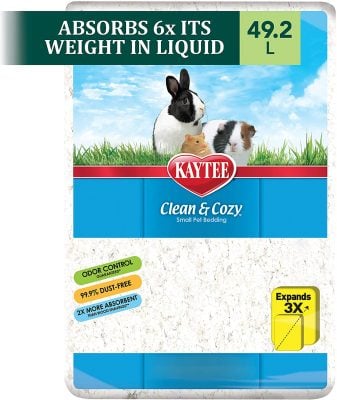
Material: Paper
This white, dye-free paper bedding from Kaytee makes it easy to spot when cleaning is required and provides a safe and soft habitat for your guinea pig. The material is made in the US and meets FDA standards – so you don’t need to worry about quality – and the company is so confident in its odor control capabilities that it guarantees a refund for any bedding that fails to remain odor-free for fourteen days. If odor is a real concern for you, consider Kaytee’s Extreme Odor Control version of this product.
Although not reusable, the product is environmentally friendly, with no toxic additives. If your guinea pigs like to burrow, they may also prefer a natural paper bedding to fleece-lined solutions, although paper linings can cause additional mess around the cage area.
Kaytee have suffered from consistency issues in the past, however, with variation in the softness and quality of its paper. Despite promising to be 99% dust-free, some batches also suffer more from dust issues than others.
Nevertheless, Kaytee’s Clean & Cozy bedding is popular for a reason: providing soft and manageable bedding that will have your cavy happily burrowing its way through the day.
Our Tip:
The white color of the Kaytee paper bedding makes it easy to spot which areas of your guinea pig’s case need cleaning. This means you can simply remove any soiled sections, rather than replacing the whole batch each time.
Pros
- Odor control guarantee with soft texture
- Made in the US
- Non-toxic and free of dyes
- Good for burrowing and nesting
- Easy to spot areas to clean
Cons
- Inconsistency across batches
- Not-reusable
- Slightly more expensive than competitors
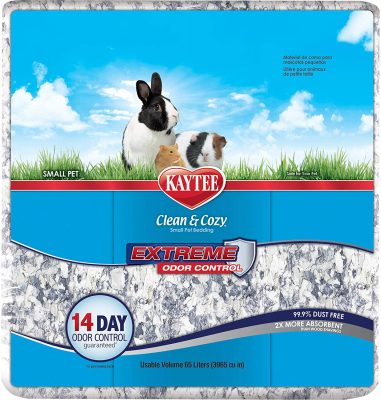
Editor’s Rating:
Why we like it: Kaytee’s paper with odor control tech promises to eliminate off smells for up to 14 days.
Material: Paper
Sometimes, no matter how often you clean out your guinea pig enclosure, those small pet odors just creep right back. Kaytee has come up with a solution: altering the fragrance of their usual bedding to cover unfortunate smells.
The Extreme Odor Control holds the same fourteen-day guarantee as its standard sister product, the Kaytee Clean & Cozy White Small Animal Bedding with similar properties.
So, does it really help with additional odors? Well, this varies from guinea pig to guinea pig, with some odor profiles interacting differently with the fragrance. Some guinea pigs may also react poorly to more heavily scented products.
Our Tip:
If you’re struggling with odors after trying the standard Small Animal Bedding, buy a small batch of the Extreme Odor Control to see how your guinea pig adjusts before investing in a larger packet.
Pros
- Odor control properties for guinea pig types
- Good for burrowing and nesting
- Easy to spot areas to clean
Cons
- Different scenting may be too strong for your guinea pig
- Not-reusable
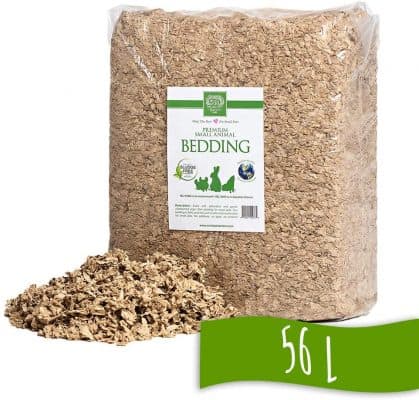
Material: Paper
Small Pet Select’s Natural Paper Bedding uses unbleached fibers left over from food-grade material. This makes them toxin-free and good for the environment, as no trees were directly harvested to make them. They are also made in the US. For another environmentally friendly solution, take a look at the Fleece section of this guide.
Your guineas will also enjoy burrowing and nesting in such a natural material.
Odor control is not as reliable as with other products however, and although it is not the most expensive product on the market, it also isn’t the cheapest given the volumes provided.
Some guinea pigs with sensitive respiratory systems may also struggle with such paper-based products, so you should try a small batch first to check it’s the right fit for your pet.
Pros
- Natural, unbleached fibers
- Good for burrowing and nesting
- Environmentally friendly solution
Cons
- Potential respiratory issues
- Odor control not as effective as alternatives

Editor’s Rating:
Why we like it: This bedding gives off much less dust than other materials, although it’s less comfortable than paper.
Material: Wood
Although not as soft as pine, cedar or paper, hardwoods like Aspen create far less dust than their wood or paper counterparts. That’s why, if your guinea pig can handle a tougher substance to live in, we recommend opting for something like Kaytee’s All Natural Aspen Bedding.
Made by an established pet brand, these Aspen shavings are also one of the best value products in our lineup.
Lack of softness is not the only issue with Aspen as a material, since a harder wood means less absorbency, and Kaytee’s offering is no exception. As many guinea pig owners know, less absorbency means more odor and more regular cleanouts. For softer wood-based options, consider a combination bedding like this product from Carefresh.
Pros
- Established brand
- Less issue with dust than alternatives
- Natural material
Cons
- Less absorbent
- Less soft
- Regular cleaning required
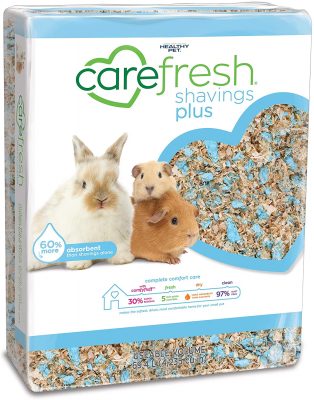
Editor’s Rating:
Why we like it: These wooden shavings combine the benefits of dust-free beddings with the comfort of paper.
Material: Wood
Balancing the dust-free benefits of hardwood with the softness and absorbency of paper, this combination bedding by Carefresh is a good compromise for guinea pigs that struggle with a pure hardwood product. It’s also one of the more affordable options available.
With only five days of odor control, however, more maintenance is required than equivalent paper-based products.
Likewise, although wood is sustainably sourced – a plus for eco-conscious consumers – this can lead to inconsistencies in texture and size across batches. This makes it less suitable for sensitive guinea pigs which respond poorly to change, and each batch should be checked to ensure low levels of dust.
Pros
- Softer than pure hardwood products
- Sustainably sourced
- Affordable
Cons
- Issues with consistency
- Less effective odor control
- Unsuitable for sensitive pets
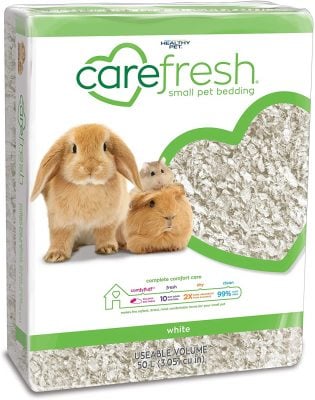
Editor’s Rating:
Why we like it: This natural bedding is soft and comfortable, making it perfect for burrowers.
Material: Paper
Carefresh is one of the most popular guinea pig bedding brands and they make their own paper from raw, natural fibers. The bedding is soft and very comfortable, so it’s ideal if your guinea pig exerts burrowing and nesting behaviors.
Carefresh is not the cheapest brand on the market and some customers might be wary about the limited odor control compared to rival brands as well as the residual dust created by the paper.
Like other paper providers, they can also be inconsistent, with quality and density varying from batch to batch.
Pros
- Use natural fibers
- Comfortable
- Good for nesting and burrowing
Cons
- Residual Dust
- Not as odor-resistant as competitors
- Inconsistency between batches
How to Choose the Right Guinea Pig Bedding
Buying the right guinea pig bedding can prove surprisingly challenging, with a wide variety of materials and brands on offer. In the following guide we go through all the factors you might want to consider when purchasing.
Materials
The most effective guinea pig beddings are typically made of one of three major families of materials: fleece, paper, or wood.
Fleece
Fleece bedding has emerged as a popular bedding solution in recent years. It can be washed and re-used, making it cheaper in the long term, and more environmentally friendly than disposable products. Fleece products should be multi-layered, with a non-permeable layer at the bottom and absorbent mid-layers which draw urine and other moisture away from the surface – and therefore your guinea pig’s feet.
Most guinea pigs take to fleece well, as its comfortable and soft. As a singular item, fleece liners are also entirely dust-free and should be made from natural materials – making them a safe and healthy option for guinea pigs.
However, unlike shavings or paper, they won’t be able to burrow or nest in a fleece liner. You may consider fleece products with a pocket, which will help imitate these properties, otherwise guinea pigs may attempt to burrow underneath the liner, defeating the purpose of a liner in the first place.
Fleece products are usually more expensive up-front than disposable options and need to be a good fit for the cage size. When in doubt: go for a larger size or attach the sides of the liner to the cage to stop your cavy finding its way underneath.
If you are an inexperienced guinea pig owner or are planning to have young children look after the pet, fleece may not be the best option as it can be more demanding to maintain than other products. Hay can attach to the liner, which is fiddly to remove, and solid waste must be removed by hand on a daily basis. The fleece will also need washing in a pet-safe detergent at least once a week. Buyers planning to purchase fleece bedding are therefore advised to buy two liners to be alternated between washes.
Fleece bedding also requires more preparation than alternative materials. First, wash the bedding in hot water and allow it to dry naturally. Then, pour a small amount of water over the fleece to check for absorbency. If water is pooling on the surface of the liner, repeat the hot water wash and try again.
Paper
Paper is a soft, tried-and-tested solution for guinea pigs, who love it for burrowing and nesting. It’s also one of the most absorbent bedding options available; controlling odors and requiring less maintenance than other materials.
As the most processed single-use product, paper tends to be more expensive than alternatives, however. And, much as your guineas will love to burrow in it – all that rooting around is likely to cause more mess around the cage area.
Although it’s disposable, eco-conscious buyers can look out for brands that use recycled paper in order to minimize environmental impact, like Small Pet Select’s Natural Paper Bedding.
It’s important that the bedding is derived from natural materials, and that it’s free of dyes and chemicals which can be dangerous for your guinea pig. Paper comes in different varieties: from firmer pellet options, to finer, softer bedding. Some brands also offer combinations of wood and mixture in order to achieve some of the benefits of both.
Paper products can suffer from inconsistency, so check each packet before you use it on your guinea pig: anything that feels too dusty could be harmful for your pet.
Wood
It’s good when nesting material mimics what your guinea would use in the wild. And whilst it isn’t easy to imitate long grassland, wood shavings come close. Wood can be a popular bedding alternative to paper, providing a firmer environment for nesting, and lessening the risk of dust or chemicals.
Wood shavings tend to be less soft, however, since they are less absorbent, they require more regular cleaning to prevent odors. You may find pine, cedar, and aspen bedding being offered as nesting material – so which is right for your guinea?
We recommend Aspen: unlike pine and cedar, it’s non-aromatic (aromas can irritate your cavy’s respiratory system), making it the safest option. It’s also softer than some other wood options, so won’t harm your guinea pig’s feet. Appropriate wood types, like Aspen, should also be non-aromatic, making them safer than pine or cedar shavings for use with your guinea pig.
If you do buy pine, make sure it’s kiln-dried and all-natural. If the batch seems particularly dense in pine oils (smelling strongly), it’s probably not suitable for your guinea pig.
Our Favorites by Material
While a diverse amount of bedding products can work for owners, some owners prefer to stick to a single product while others like to change things up. The following are our favorite product picks in each category.
Fleece Bedding
In the fleece-lined category, we recommend the Guinea Dad Fleece Liner 2.0. Compared to its competitors, it represents the best value for money and the best choice for the environment. It also boasts some of the best absorbency of any fleece product out there. Just be prepared for regular washing!
Paper Bedding
In the paper category, we think Kaytee Clean & Cozy White Small Animal Bedding offers the best value – controlling odor more effectively than its competitors, with a guarantee if it fails. Soft and environmentally friendly, it’s a good all-around option for your cavy.
Wood Bedding
If your guinea pig responds well to hardwoods, then Kaytee’s All Natural Aspen Bedding is an affordable, effective bedding solution by an established US brand.
What to Avoid
According to the Pet Care Veterinary Hospital, there are materials you should be sure to avoid using as guinea pig bedding. Wood shavings taken from timber yards or sawmills can be contaminated with mites and parasites or treated with chemicals – so always check the source of wood-based products.
Likewise, sawdust is obviously dusty, irritating your guinea pig’s respiratory system, and sometimes risking more serious illnesses like pneumonia. Wood pellets too can break down into sawdust when they’re wet.
The phenols and oils on some wood products can also act as an irritant, and even a carcinogen, for small mammals. Corn cob and straw bedding is common, but also inadvisable; molding quickly and getting trapped in unfortunate places on your guinea pig. There’s also a risk your guinea pig will be tempted to ingest these food-like products.
Newspaper is also a common, but bad solution for bedding: lacking the necessary absorbency and accumulating bacteria, which is bad for your guinea pig’s health. It’s also a mess to clean! Finally, don’t be tempted to use spare cat litter that’s lying around: the hard surface can harm your cavy’s feet, and the chemical treatment is a real danger to its health.
Preparing Your Bedding
Before applying your guinea pig bedding, ensure the cage or pen first has a solid floor covering. Otherwise, guinea pigs can catch their feet in wire and injure themselves. Cavies are very sensitive to heat and fumes, so ensure their pen location is also is suitably ventilated, with an open top and air-permeable walls (avoid glass!).
You may also wish to add a lining, such as old towels, before applying bedding on top. This will help with your guinea pig’s comfort.
Once you’ve applied the lining, you should cover the floor of the enclosure with around three inches of bedding. Guinea pigs like to spend most of their time in a ‘safe space,’ where they burrow, and then the area where they go to receive food and water. According to research by Noldus, Guinea pigs also tend to prefer using the edges of their shelters to move: so pay particular attention to these areas when laying down bedding.
Cleaning Bedding
Ensure that at least once a week all bedding is removed, and the guinea pig enclosure is washed with a mild soap solution or pet-friendly detergent. Rinse thoroughly afterwards to remove all residue. Don’t be tempted to re-use old bedding as this can contain harmful bacteria invisible to the naked eye. Keeping your guinea pig’s habitat clean is vital for its long-term health.
A happy guinea pig should be active and inquisitive, exerting natural behaviors like nesting and burrowing. A very happy guinea will even ‘popcorn’ in their cage, leaping about in the air to show their appreciation of your efforts! You can find a video compilation here to show just what this looks like.
Final Thoughts
Although getting the right bedding for your guinea pig can seem bewildering at first, by using the principles outlined in this guide and our recommended products, you can’t go wrong. By researching here, you can have peace of mind that your guinea will settle well into a safe and happy home for it to enjoy!

